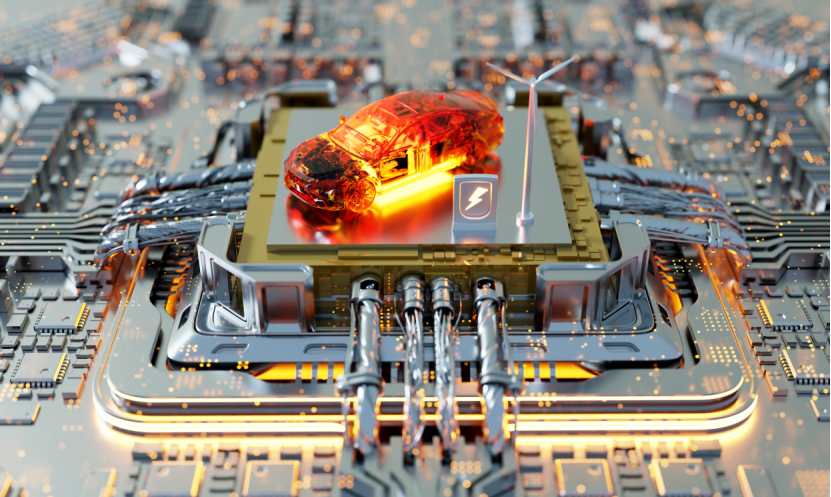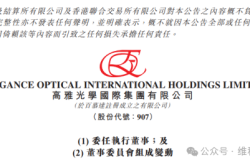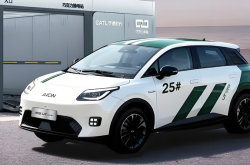"Industrial Game Under the Guise of 'Security': New US Regulations May Impact Global Intelligent Connected Vehicle Landscape
![]() 01/17 2025
01/17 2025
![]() 466
466
A Reuters report on January 14 revealed that the US Department of Commerce issued an administrative rule on the same day, banning the sale or import of certain connected vehicle software and hardware from China and Russia, citing "protection of US national security." The software ban will take effect for models from 2027, while the hardware ban will be imposed on models from 2030.
The scope of this ban is exceptionally broad, encompassing core areas such as vehicle communication system (VCS) hardware and software, as well as autonomous driving system (ADS) software. Additionally, the US Department of Commerce will prohibit manufacturers with "sufficient connections to China and Russia" from selling related new connected vehicles in the US, even if manufactured domestically.
▍Emergence of Containment Measures
In recent years, Chinese enterprises have accelerated technological iteration in the field of intelligent connected vehicles, fostering a robust development momentum. This has resulted in a complete industrial chain system, spanning from chips, sensors, software algorithms to vehicle manufacturing. Local automakers like BYD, NIO, and XPeng have emerged as significant players, not only dominating the domestic market but also actively expanding into overseas markets, exporting to Europe, Asia, and beyond, profoundly impacting the global automotive industry landscape.
The industry chain also boasts star autonomous driving companies entering the capital market, with WeRide and Pony.ai listing on the US stock market, and RoboSense, Horizon Robotics, and Black Sesame Technologies listing on the Hong Kong stock market. Sumu Technology has secured a listing ticket on the Hong Kong Stock Exchange. According to incomplete statistics, since 2024, a total of 14 autonomous driving-related enterprises in China have been listed or are advancing their listing processes on various exchanges.
The industry believes that the United States has always viewed technology as crucial for maintaining its global position. By implementing this ban, the US aims to sever the channels for relevant Chinese technologies and products to enter the US market, thereby impeding the internationalization of China's intelligent connected vehicle industry and its technological innovation and industrial development momentum in this field. This is a bid to preserve its leading position in the global technology sector, a strategy previously employed in semiconductors, communications, and other fields.

Behind this ban lies the current predicament of traditional US automotive giants like General Motors and Ford. Despite their deep expertise in internal combustion vehicles, they face numerous challenges in transitioning to new energy vehicles.
On the one hand, in terms of technological research and development, traditional US automakers lag behind emerging automakers in China and other countries, with slower iteration speeds and relatively insufficient investment in battery technology, autonomous driving software algorithms, and intelligent connected system integration. This leads to slightly inferior market competitiveness for their products. On the other hand, in market layout and supply chain management, traditional US automakers are not responsive enough to emerging markets, and their supply chain systems are relatively rigid, making it difficult to quickly adapt to changes in the new energy vehicle market.
These new US regulations are essentially an "upgraded" crackdown on existing restrictions on Chinese vehicles, software, and components. By banning connected vehicle hardware and software manufactured in China and Russia from entering the US market, the US aims to provide more time and space for its local automotive industry during the critical period of the new energy transition, thereby limiting external competition.
Furthermore, the US has recently restricted the export of high-performance AI chips to China, further constraining China's progress in AI and autonomous driving.
In response, Nikkei Asia reported, after interviewing industry observers and former government officials, that as China has made significant advancements in electric vehicles, the US government merely seeks to restrict the entry of Chinese electric vehicles into the US market to aid American automakers in competition. Some personnel from local US consulting firms also expressed doubts about "threatening national security," stating, "We clearly know which data autonomous vehicles collect or do not collect."
▍Collision of Public Opinions
Currently, China is the world's largest automotive exporter, but the total volume of vehicles exported to the US is not substantial. According to data from the China Passenger Car Association, the total volume of passenger vehicles exported from China to the US in 2023 was 74,800 units, accounting for 1.4%. Data from the China Automobile Data Research Institute shows that the US is not among the top ten destinations for automobile exports and new energy vehicle exports in 2024. Therefore, the aforementioned ban currently has a limited impact on Chinese automakers.
Nikkei Asia's analysis suggests that the ban may have a greater impact on suppliers in China's hardware sector, such as LiDAR manufacturers. Data indicates that in 2023, RoboSense, Hesai Technology, and Huawei Technologies accounted for over 65% of global LiDAR sales.
According to data from the China Association of Automobile Manufacturers, if the ban takes effect as scheduled, it is estimated that billions of yuan worth of Chinese intelligent connected vehicles and related components will be unable to enter the US market annually.
A survey by the consulting firm Albright Stonebridge Group revealed that approximately 60% of US consumers consider the intelligent connected functions of vehicles when purchasing cars. When asked about their views on the US government's policy banning Chinese and Russian connected vehicle hardware and software from entering the US market, more than 40% of consumers expressed incomprehension, believing that this policy limits their consumer choices and may lead them to purchase less cost-effective products.

Paul Triolo, a consultant at the firm, stated clearly, "I am well aware of the data collected by autonomous vehicles. The US government's excuse of 'threatening national security' to implement the ban is hardly convincing."
Some executives of multinational automakers have also expressed concerns on social media platforms, believing that the US government's trade policy is too tough, which will not only intensify international competition but may also trigger a series of economic frictions, seriously disrupting the stable development of the global automotive industry.
It is noteworthy that in the initial stages of implementing the new regulations, local US automakers will undoubtedly become direct beneficiaries. Due to the ban on connected vehicle hardware and software manufactured in China and Russia from entering the US market, US automakers, which originally faced fierce competition in the field of intelligent connected vehicles, will enjoy a relatively relaxed market environment. However, for US automakers like General Motors and Ford, they cannot resell Chinese-made vehicles to the US mainland, which may affect their production layout and investment plans in China, increasing production costs and operational difficulties.
Former US Treasury official J. Philip Ludwigsson believes that Trump may revoke part of the Biden administration's agenda after taking office, but US importers and automakers still cannot risk violating the law.
This US ban undoubtedly brings far-reaching and lasting implications for the global automotive industry landscape. In the field of intelligent connected vehicles, the original scenario of automakers from various countries competing and cooperating to jointly promote technological progress and industrial development has been disrupted. The global automotive industry's supply chain system, technological innovation direction, and market competition landscape will all face profound adjustments.
For China's automotive industry, despite the significant challenges posed by the ban, it also presents unprecedented development opportunities. In terms of challenges, in the short term, the path for Chinese automakers to expand into the US market will be hindered, necessitating the readjustment of their global market strategic layout and increased investment and development efforts in other markets. Simultaneously, enterprises need to invest more resources in technological research and development and supply chain management to cope with the ban in the US market and unstable factors in the global supply chain. However, in the long run, this ban also urges China's automotive industry to more firmly embark on the path of independent innovation and self-controllable development.
Typesetting | Yang Shuo Image Source: Shutterstock





